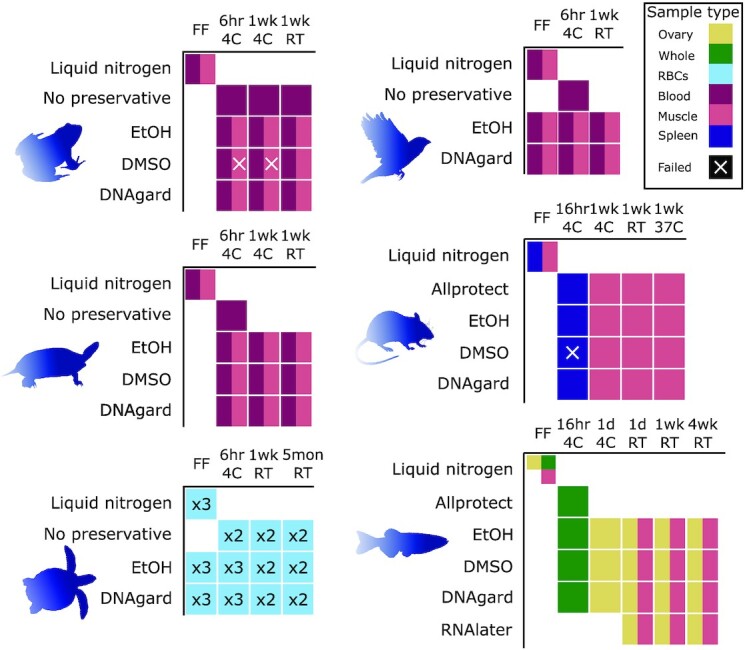Figure 1:

Experimental design for benchmarking tissue preservation. Graphical visualization of samples and treatments used in this study. Rows denote preservative treatments and columns temperature treatments. Colors indicate different types of tissue samples (see legend at top right). For the sea turtle samples, cells with numbers (x2 or x3) indicate conditions where samples from more than 1 individual were processed for comparison. All samples were transferred to –80°C after the specified temperature treatment (e.g., “6hr 4C” means stored at 4°C for 6 hours before transfer to –80°C). Abbreviations are as follows: RBCs, isolated red blood cells; EtOH, 95% ethanol; DMSO, a mix of 20–25% dimethyl sulfoxide, 25% 0.5 M EDTA, and 50–55% H2O, saturated with NaCl. DNAgard, DNAgard tissue and cells (cat. no. #62001–046; Biomatrica); Allprotect, Allprotect Tissue Reagent (cat. no. 76405; Qiagen); RNAlater, RNAlater Stabilization Solution (cat. no. AM7021; Invitrogen); FF, flash-frozen in liquid nitrogen immediately upon dissection; 6hr, 6 hours; 1d, 1 day; 1wk, 1 week; 5mon, 5 months; RT, room temperature (20–25°C). Samples were collected from these species: house mouse (Mus musculus), zebra finch (Taeniopygia guttata), Kemp's Ridley sea turtle (Lepidochelys kempii), painted turtle (Chrysemys picta), American bullfrog (Rana catesbeiana), and zebrafish (Danio rerio).
